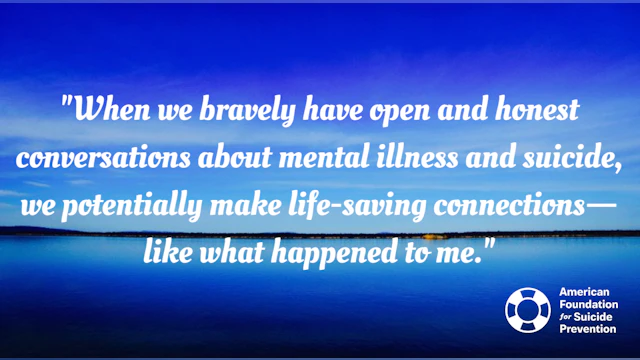Note: This blog is part of a cross-collaboration between the American Foundation for Suicide Prevention and the National Alliance on Mental Illness (NAMI), the nation’s largest grassroots mental health organization dedicated to building better lives for the millions of Americans affected by mental illness. This piece originally appeared on the NAMI Blog.
March 27, 2018 - From time to time during my work as a pastor, I have faced the sad task of officiating a funeral or memorial service for a person who died by suicide. Grief is complicated for those experiencing a suicide loss; loved ones face not only sadness, but also anger. Although the anger isn’t always rational, it is certainly understandable.
Many also face the stigma our cultures—and often our churches—assign to a death by suicide. For instance, I think it’s a terrible shame when families insist that the service not even mention the word “suicide.” Once, a mother whose son died by suicide reasoned that she feared his life would forever be reduced to that single act. She feared that all other aspects of his life, like the work he did and the friendships he enjoyed, would be forgotten. “If he had died of cancer, or in a car accident, that wouldn’t be all people talked about,” she argued.
Inspired by this mother’s fear of how her son’s memory might be reduced and skewed, I began to characterize suicide in my funerals and memorial services as not a desire for death, but a cry for life—more life, better life.
So often, our culture concludes that suicide is a rejection of life, a willful refusal to live any longer, but I believe suicide is a statement that life can and should be so much more than pain or despair. If a suicidal person only sees a future with days on end of pain, then that vision looks nothing like the sort of life we all long to enjoy.
I remember in my own times of depression and thoughts of suicide, I often thought, “If this is all there is, if loneliness and meaninglessness and failure are going to be the sum of my experience, then forget it. This is not life. I am breathing, going through the motions, but I am not truly living.” I desperately wanted to live, but I couldn’t find a way to do so. Yet without realizing it, saying that I no longer wanted to live actually became a way to live.
Having the courage to say how I was feeling and what I was experiencing—not pretending, but being honest even when what I was saying was difficult—was how I took my first steps away from a life that seemed no life at all towards a “real life” worth living. It’s a strange paradox: The more willing we are to be vulnerable and less-than-perfect, to ask for support when can no longer support ourselves, the stronger we become and the richer our lives become. Connections with others make the difference.
Opening The Conversation
When we bravely have open and honest conversations about mental illness and suicide, we potentially make life-saving connections—like what happened to me. Without those conversations, we only have loneliness, silence and unanswered questions.
When I speak to those who attend the services of a person who died by suicide, I often discover that it’s not their first experience of grieving such a death. They reference family members, friends, colleagues or neighbors who died by suicide, and how the present death brought back those earlier losses. They talk about how they continue to struggle with their memories and questions.
The shadow of suicide is long. Those who just experienced a suicide loss need comfort, and a religious service might provide it. However, that cannot happen if the manner of death is never mentioned. So, as we approach International Survivors of Suicide Loss Day, we might consider overcoming our reluctance to speak of suicide, to break apart the taboo that encloses it. Until we start talking, healing cannot happen.
And as we speak more openly and honestly, we open the possibility that the cry for life suicide represents might be heard in time.
